
Calculations in Tableau: A Road to Tableau Desktop Specialist Certification
Last Updated on May 16, 2022 by Editorial Team
Author(s): Daksh Trehan
Originally published on Towards AI the World’s Leading AI and Technology News and Media Company. If you are building an AI-related product or service, we invite you to consider becoming an AI sponsor. At Towards AI, we help scale AI and technology startups. Let us help you unleash your technology to the masses.
Tableau, Data Analytics, Business Intelligence, Data Science
Chapter 11: A comprehensive guide on Calculations in Tableau with free Udemy Dumps.

Welcome to the eleventh chapter, In this piece, we are going to learn about Calculations in Tableau.
If you want to navigate through other chapters, visit: Tableau: What it is? Why it is the best?; A road to Tableau Desktop Specialist Certification.
If you want to directly go on Tableau Desktop Specialist notes, access them here → https://dakshtrehan.notion.site/Tableau-Notes-c13fceda97b94bda940edbf6751cf30
Use the link to get access to free Tableau certification dumps (Valid till 20 May 2022):
Table of Content
- Why use Calculation?
- Types of Calculations
- Editing & Removing a Calculation
- Sample Certification Questions from this Topic
Why use Calculations?
Calculations are used when we want to add custom fields that are derived from generic fields in our dataset. In simple words, Calculations are used when we want our data to answer some indirect questions.
Consider our database contains two rows: Name & Age. We can get our data to answer some indirect questions like if the person is above 18, mention “Eligible to vote”. This is how calculations work, they’re made to answer some indirect questions.
When we create a new calculated field, we are creating a new field in our dataset. The type of calculated field depends upon the type of fields used in our calculations i.e. if we are creating a calculated field on dimensions, the new field would represent a dimension and the same goes for a measure.
The dimensions that define how to group calculations are called partitioning fields.
The dimensions upon which the table calculation is performed are called addressing fields.
Some of the scenarios where Calculations might be helpful are:
- Converting data types of fields.
- Categorizing data.
- Filter Results.
- Aggregate Data.
- Calculating Ratios.
- Creating new data for visualization.
A calculation, also known as a formula, includes some or all of these components:
- Fields
- Functions
- Operators
- Parameters
- Comments
Creating a Calculated Field
To create a calculated field, go to the data pane and click on the drop-down and choose “Create Calculated Field”.
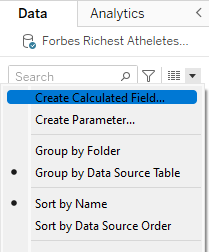
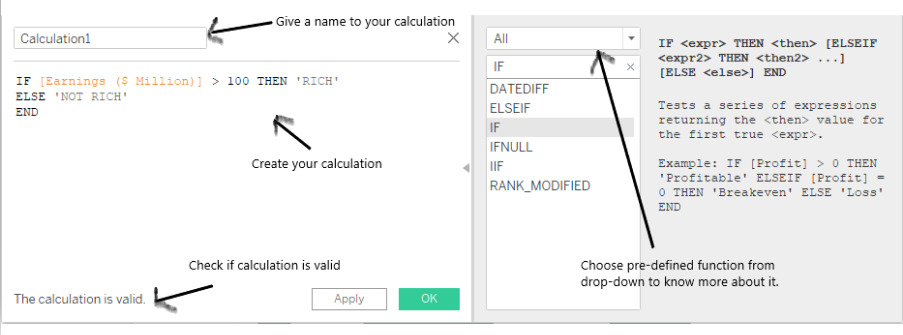
As per the data type used, the calculation will be classified either as a dimension or measure.
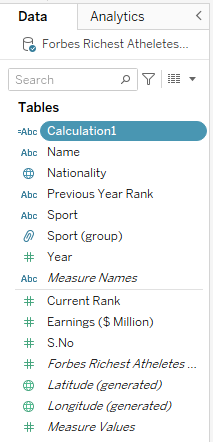
Types of Calculations
There are three types of calculations one can use in Tableau:
Basic Calculations
A basic calculation allows users to transform data either on the data source level of detail or visualization level of detail.
e.g. Splitting the strings(Data source level of detail), Aggregating columns(visualization level of detail)
Level of Detail(LOD) Calculations
LOD calculations work on the same principle as Basic Calculation i.e. on data source level of detail or visualization level of detail but are more precise.
There are three types of LOD Calculations:
- INCLUDE(more granular level)
- EXCLUDE(less granular level)
- FIXED(independent level)
LOD Calculations aren’t part of Tableau Desktop Specialist Certification so we aren’t gonna dive deep into it.
Table Calculations
A table calculation is only valid for fields in visualization. They don’t consider any other field that is filtered out in visualization.
These calculations could help create ranks, show running totals, percent of total, percentile, moving average, etc.
There are two ways to create a Table Calculation:
From Analysis

From Column/Row Shelf
Add some dimensions and measures on rows and column shelves. Right-click on the measure and choose “Quick Table Calculation” or “Add Table Calculation”.
Total table calculations supported by Tableau are:

The scope of a table calculation could be:
Table(Across)

Table(Down)
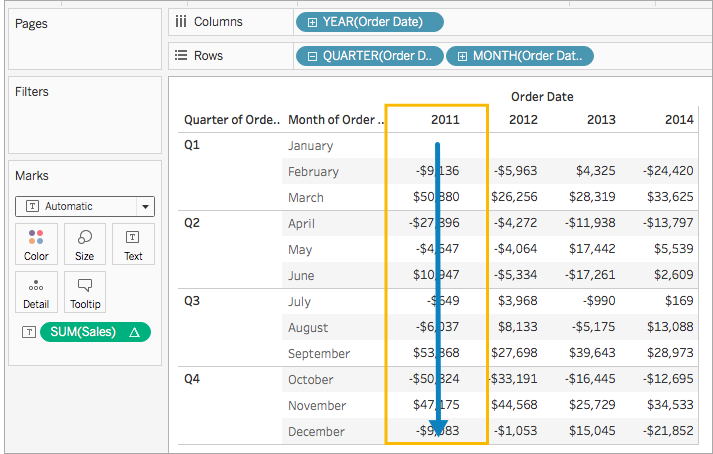
Table(Across then Down)

Table(Down then Across)
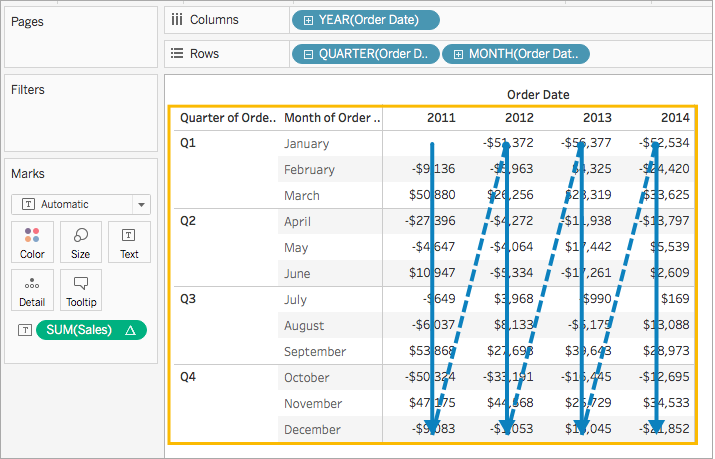
Pane(Down)
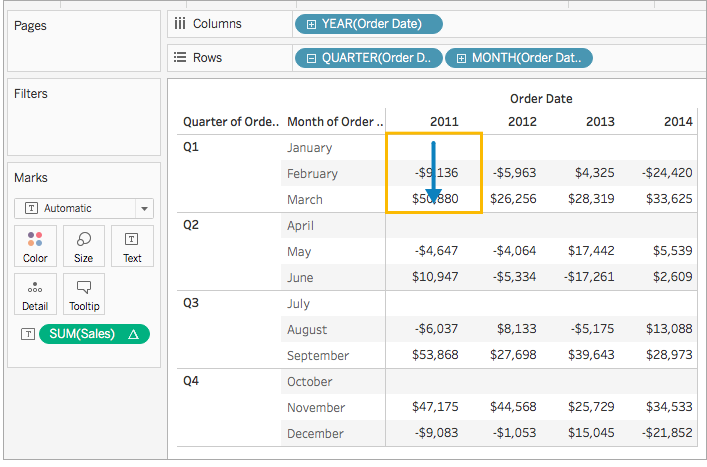
Pane(Across then Down)
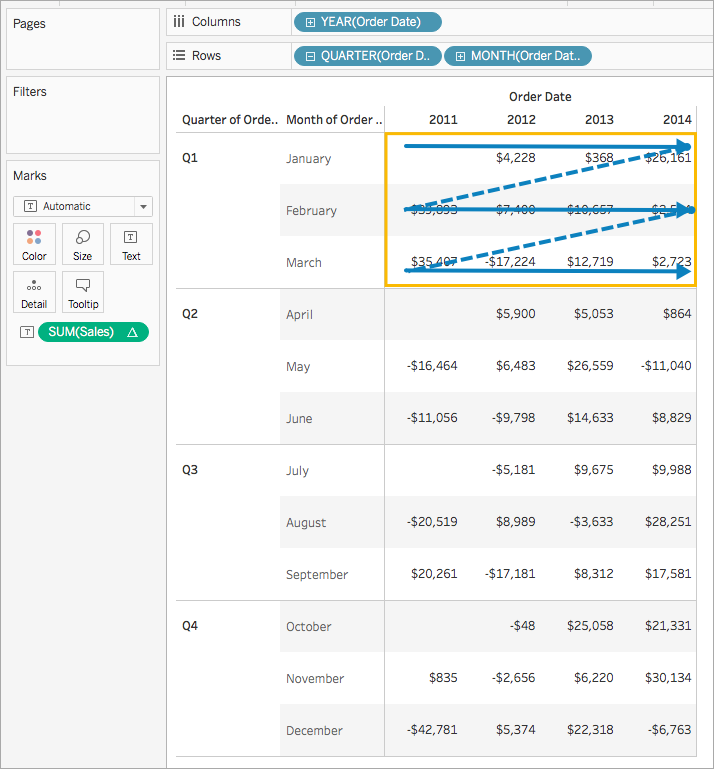
Pane(Down then Across)

Cell

Editing & Removing a Table Calculation
To edit a Calculation, simply right-click and choose “Edit”.
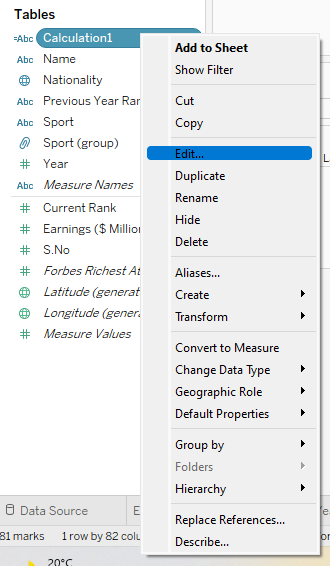
To remove a calculation, right click on the measure in the view(on which calculation is applied) and choose “Clear Table Calculation”.
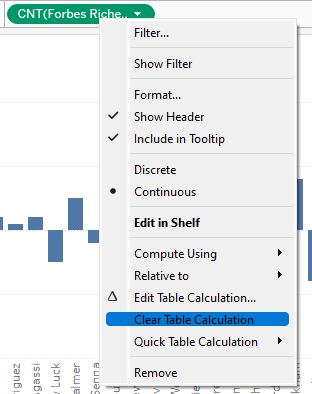
Sample Certification Questions from this Topic
Which function can return absolute value of a given number?
a. Floor
b. Ceil
c. Round
d. Abs
Solution: Abs
Which is not a valid Table Calculation?
a. Difference From
b. Rank
c. Percentile
d. Difference of Total
Solution: Difference of Total
The average function treat null values as zeros?
a. True
b. False
Solution: False
Totals can be done either through? [Choose 2]
a. Analytics Pane
b. Worksheet Menu
c. Analysis Menu
d. Right clicking in the view.
Solution: Analytics Pane, Analysis Menu
Percentile is available both in aggregation and calculation?
a. True
b. False
Solution: True
Use the link to get access to free Tableau certification dumps (Valid till 20 May 2022):
References:
[1] Tableau Help | Tableau Software
[2] Personal Notes
[3]Tableau Desktop Specialist Exam (New Pattern — 2021) — Apisero
Thanks for Reading!
Feel free to give claps so I know how helpful this post was for you, and share it on your social networks, this would be very helpful for me.
If you like this article and want to learn more about Machine Learning, Data Science, Python, BI. Please consider subscribing to my newsletter:
Find me on the Web: www.dakshtrehan.com
Connect with me at LinkedIn: www.linkedin.com/in/dakshtrehan
Read my Tech blogs: www.dakshtrehan.medium.com
Connect with me at Instagram: www.instagram.com/_daksh_trehan_
Want to learn more?
How is YouTube using AI to recommend videos?
Detecting COVID-19 Using Deep Learning
The Inescapable AI Algorithm: TikTok
GPT-3 Explained to a 5-year-old.
Tinder+AI: A perfect Matchmaking?
An insider’s guide to Cartoonization using Machine Learning
How Google made “Hum to Search?”
One-line Magical code to perform EDA!
Give me 5-minutes, I’ll give you a DeepFake!
Cheers
Calculations in Tableau: A Road to Tableau Desktop Specialist Certification was originally published in Towards AI on Medium, where people are continuing the conversation by highlighting and responding to this story.
Join thousands of data leaders on the AI newsletter. It’s free, we don’t spam, and we never share your email address. Keep up to date with the latest work in AI. From research to projects and ideas. If you are building an AI startup, an AI-related product, or a service, we invite you to consider becoming a sponsor.
Published via Towards AI
Take our 90+ lesson From Beginner to Advanced LLM Developer Certification: From choosing a project to deploying a working product this is the most comprehensive and practical LLM course out there!
Towards AI has published Building LLMs for Production—our 470+ page guide to mastering LLMs with practical projects and expert insights!

Discover Your Dream AI Career at Towards AI Jobs
Towards AI has built a jobs board tailored specifically to Machine Learning and Data Science Jobs and Skills. Our software searches for live AI jobs each hour, labels and categorises them and makes them easily searchable. Explore over 40,000 live jobs today with Towards AI Jobs!
Note: Content contains the views of the contributing authors and not Towards AI.














